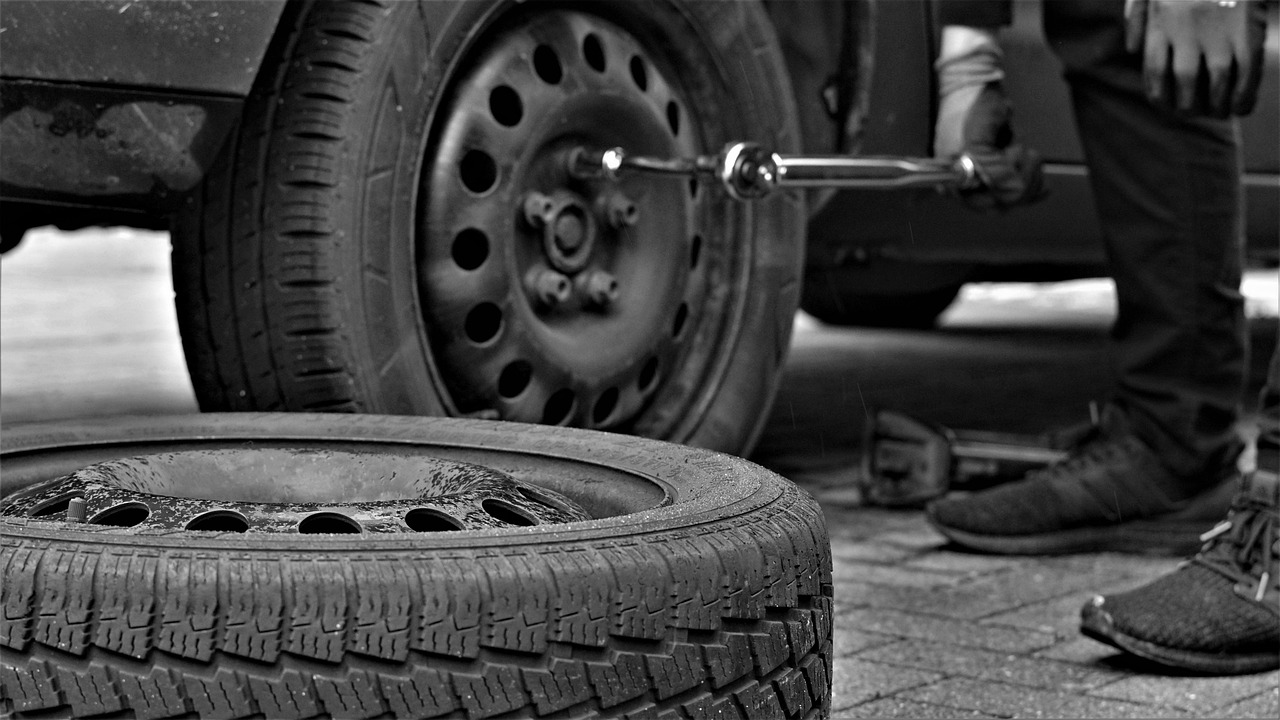
Driving down the road without a care in the world only to suddenly hear a loud bang and experience a sudden loss in control over your vehicle is a terrifying experience. If you find yourself in this situation, you have more than likely experienced a tire blowout on your vehicle. There are many common causes of tire blowouts that you should be aware of, but knowing how to respond when one happens is equally as important.
By reacting safely you can reduce your chance of injury and also reduce the chance of an accident occurring on the road. Learn everything you need to know to handle the situation effectively.
The first step in handling a tire blowout properly is understanding that a tire blowout actually happened. To that end, learn the major warning signs that a tire blowout may be imminent and unavoidable:
If, after experiencing any of the above, you hear a loud bang or popping noise coupled with difficulty controlling your vehicle, it’s more than likely that a tire blowout just happened.
To confirm, try to look in your side mirrors or rearview mirror to assess the damage initially. If the blowout was very severe, it’s possible you may see some rubber flapping in the wind.
Assuming that a tire blowout has occurred, your first priority needs to be staying calm and getting your vehicle under control. Avoid panicking or making any sudden jerking movements to the wheel. Instead, keep both hands firmly on the wheel and focus on the road ahead. This will keep you calm and ensure that any drifting your vehicle is trying to do is under control.
You should avoid slamming on the brakes, too. With one of your tires blown out, your vehicle will not respond to braking like normal. Instead of doing this, allow your vehicle to slow down gradually on its own by removing pressure slowly from the gas pedal. Going slow is the name of the game to staying safe when you’ve experienced a tire blowout.
As your vehicle begins to slow down, use both hands to keep your vehicle point straight. Make small corrections when necessary if your vehicle is attempting to shift one way or the other. As you ease off the accelerator you may notice your vehicle try to shift more, so just keep a tight grip and focus on the road ahead.
When your vehicle has begun to slow down enough for you to maneuver it safely, start to look for a safe spot to stop the car. When the blowout initially happens and you start to slow down, flip your hazards on so that other drivers understand you are having an emergency and will give you room.
As you start to look for a place to pull over, aim for a wide shoulder, rest stop, or parking lot if possible. Once you have come to a full spot in your chosen area, leave your hazards on if there is still traffic nearby. If you have reflective triangles or flares available, you should also set them up around your vehicle to alert drivers and to create a perimeter.
If you have the choice between two areas to pull over though, one in the way of traffic and one away from traffic, you should try to go towards the latter. The last thing you want is to accidentally cause a secondary accident because other drivers weren’t prepared to have to maneuver around your vehicle.
Once you have gotten yourself all set up in a safe area, you should start to assess the damage to your vehicle so that you can determine the next steps. Take a look at the blown-out tire, assuming it’s safe to do so. You should check for visible damage such as tire shredding or a complete blowout as this will tell you the scope of the issue.
If you see any sidewall damage, meaning the area on the vertical side of the tire perpendicular to the road, it is unsafe to drive further. In this situation, you will need to call for assistance from a professional or change the tire yourself. If you have a spare and know how to handle it, follow the proper procedures. For most vehicles, the spare tire is in the trunk underneath a hatch that you have to lift up, though some cars have the spare exposed on the back of a vehicle such as on a Jeep Wrangler.
Assuming you don’t have a spare or don’t know how to change a tire, call roadside assistance or a towing service so that they can come get you out of the road. In a last-case scenario, call your friends or families who may know how to change a tire if you want to save a couple hundred bucks in towing fees.
By staying calm, maintaining control, and pulling over safely as soon as possible, you can reduce the risk of serious injury happening following a tire blowout. The suddenness of the situation is still terrifying, though, so remember that it’s perfectly alright to be scared so long as you are in control.
The best way to prevent tire blowouts from happening in the future is to handle proper tire maintenance on a regular basis. This means ensuring tire pressure is adequate, rotating tires on a regular schedule, patching holes in tires, and getting your tires changed once they are ready.
Always have an emergency plan in place for the event that a tire does blowout, and have an effective roadside assistance company on speed dial if you can’t handle the issue yourself.